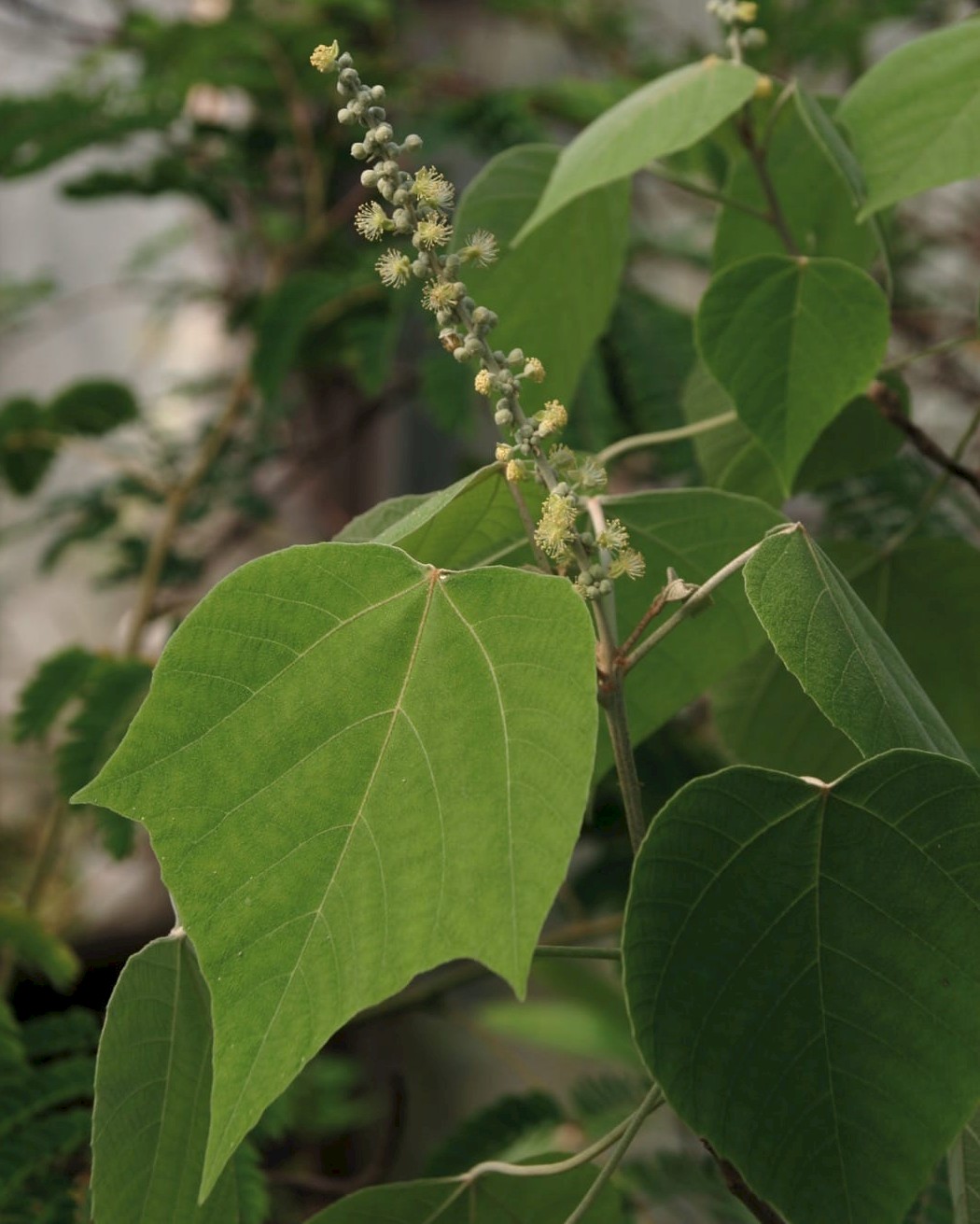Mallotus apelta
Credits
Article from New Trees by John Grimshaw & Ross Bayton
Recommended citation
'Mallotus apelta' from the website Trees and Shrubs Online (treesandshrubsonline.
Genus
Synonyms
- M. castanopsis F.P. Metcalf
- M. paxii Pamp.
- M. tenuifolius Pax
Shrub or tree 2–10 m. Branchlets, petioles and inflorescences densely covered in yellowish, stellate tomentum and orange glands. Leaves deciduous, alternate, 6–16(–25) cm long and wide, upper surface glabrous or sparsely pubescent, lower surface covered with greyish white stellate tomentum and orange glands, six to seven lateral veins on each side of the midrib, margins sparsely serrate, apex acute or acuminate; petiole 5–15 cm long. Inflorescences terminal or lateral, spicate or paniculate, 15–30 cm long; bracts very small. Male flowers pedicellate; calyx four-lobed, densely yellow tomentose outside, glandular inside; corolla absent; stamens 50–75. Female flowers pedicellate or almost sessile; calyx three- to five-lobed, densely white tomentose and glandular; corolla absent; styles three to four, stigma feathery. Capsule subglobose, 0.5–1 cm long, densely covered in greyish white stellate hairs and soft yellowish spines. Flowering June to September, fruiting August to November (China). Qiu & Gilbert 2008. Distribution CHINA: Anhui, Fujian, Guangdong, Guangxi, Hainan, Henan, Hong Kong, Hubei, Hunan, Jiangsu, Jiangxi, Shaanxi, Yunnan, Zhejiang. Habitat Montane forest. USDA Hardiness Zone 7. Conservation status Not evaluated. Illustration NT507. Taxonomic note The horticultural literature often falls into the trap of writing the epithet apetala which, although true, is incorrect.
Mallotus apelta is very little known in cultivation, but is admired by those who do grow it for its umbrella-like outline and soft, velvety leaves that turn yellow or orange in autumn (Cistus Nursery 2007–2008). The flowers are insignificant. It is commercially available in the United States, and is found in some collections there. At the JC Raulston Arboretum a specimen planted in 1996 had achieved 5.5 m by 2004 (JC Raulston Arboretum database), growing as a single-stemmed tree. At Tregrehan plants only lasted a couple of years before fading away, probably through failing to ripen their growth properly (T. Hudson, pers. comm. 2007). It appreciates ample moisture and heat in the growing season.

